 |
C language: Variables, Data Types, Arithmetic Operators, Precedence of Operators |
| << System Software, Application Software, C language |
| C++: Examples of Expressions, Use of Operators >> |
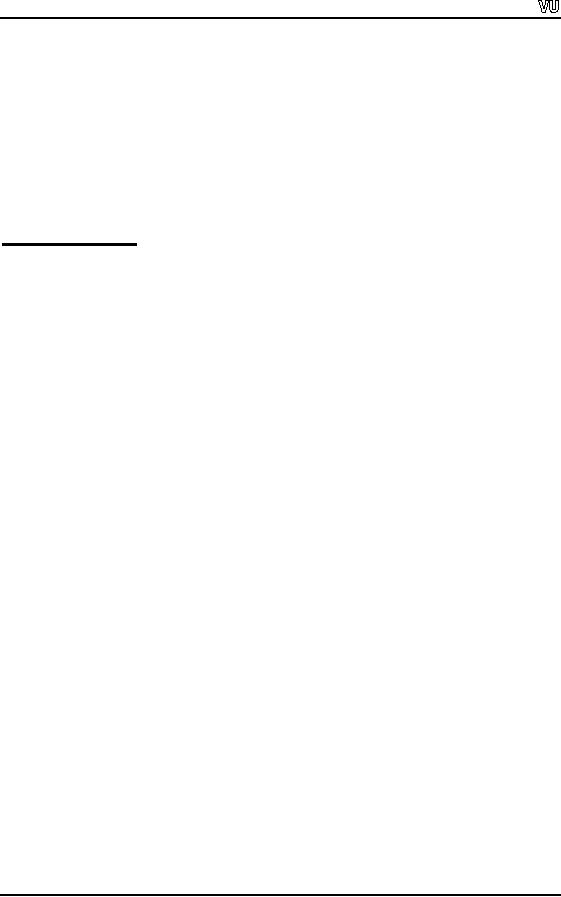
CS201
Introduction to Programming
Lecture
Handout
Introduction
to programming
Lecture
No. 3
Reading
Material
Deitel
& Deitel C++ How to
Program
chapter
1
1.19,
1.20, 1.21, 1.22
Summary
First C
program
o
Variables
o
Data
Types
o
Arithmetic
Operators
o
Precedence
of Operators
o
Tips
o
First C
program
The
best way to learn C is to
start coding right away. So
here is our very first
program in
C.
# include
<iostream.h>
main()
{
cout
<< "Welcome to
of Pakistan";
}
We will
look at this code line by
line and try to understand
them.
# include
<iostream.h>
#include:
This is a
pre-processor directive. It is not
part of our program; it is an
instruction
to the compiler. It tells
the C compiler to include
the
contents of a file, in
this
case
the system file iostream.h. The
compiler knows that it is a
system file, and
therefore
Page
13
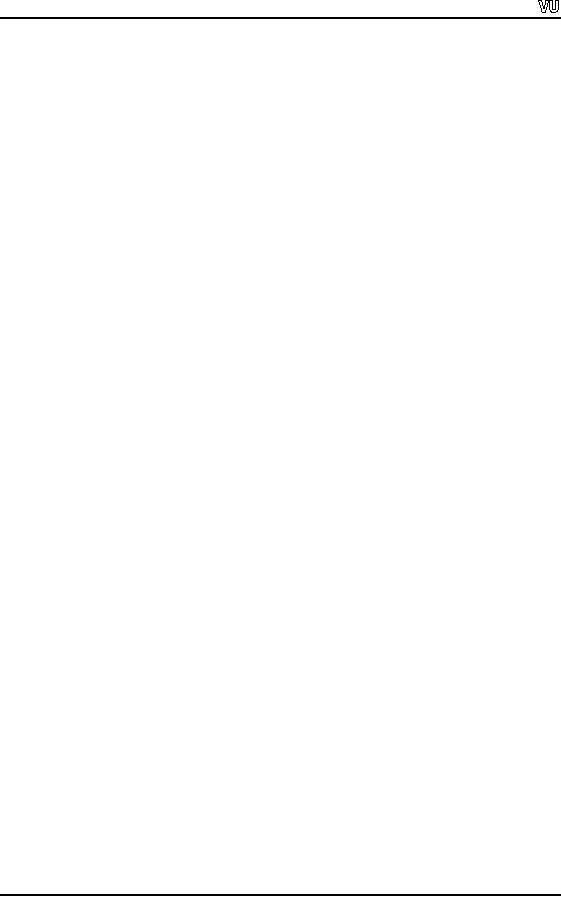
CS201
Introduction to Programming
looks
for it in a special place.
The features of preprocessor
will be discussed later.
For
the
time being take this
line on faith. You have to
write this line. The sign #
is known as
HASH
and also called
SHARP.
<iostream.h>
This is
the name of the library
definition file for all
Input Output Streams. Your
program
will
almost certainly want to send
stuff to the screen and
read things from the
keyboard.
iostream.h
is
the name of the file in
which has code to do that
work for you
main()
The
name main
is
special, in that the main
is
actually the one which is
run when your
program
is used. A C program is made up of a
large number of functions. Each of
these is
given a
name by the programmer and
they refer to each other as
the program runs. C
regards
the name "main" as a
special case and will
run this function first. If
you forget to
have a
main function, or mistype
the name, the compiler
will give you an
error.
Notice
that there are parentheses
("(
)",
normal brackets) with main.
Here the parentheses
contain nothing.
There may be something written inside
the parentheses. It will
be
discussed
in next lectures.
{}
Next,
there is a curly bracket
also called braces("{
}").
For every open brace
there must be
a matching
close. Braces allows to
group together pieces of a program.
The body of main
is
enclosed in braces. Braces
are very important in C;
they enclose the blocks of
the
program.
cout
<< " Welcome to Virtual University of
Pakistan"
cout:
This is
known as out put stream in C
and C++. Stream is a complicated
thing, you will
learn
about it later. Think a
stream as a door. The data
is transferred through stream,
cout
takes
data from computer and sends
it to the output. For the
moment it is a screen of
the
monitor.
hence we use cout
for
output.
<<
The sign
<<
indicates
the direction of data. Here it is towards
cout
and
the function of
cout
is to
show data on the
screen.
Page
14
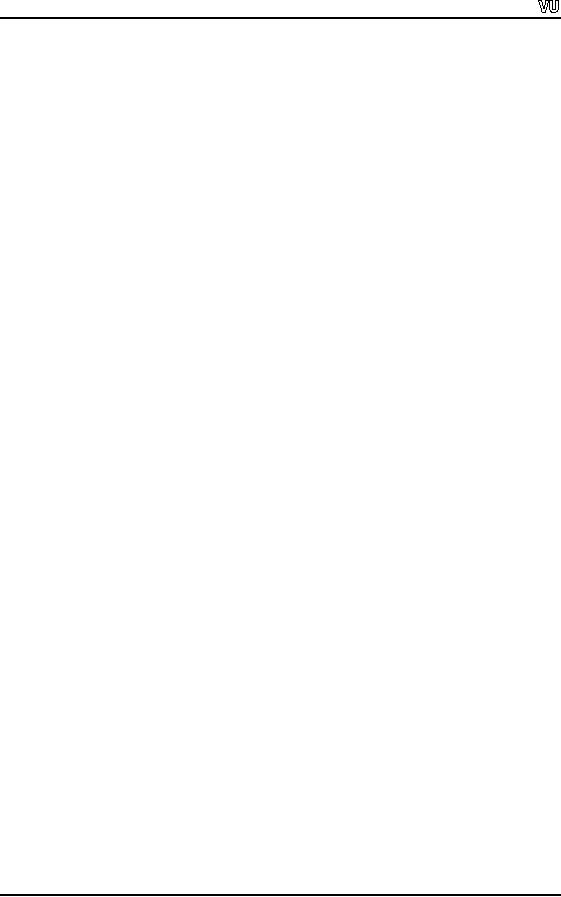
CS201
Introduction to Programming
"
Welcome to of
Pakistan"
The
thing between the double
quotes (" ") is known as character
string. In C
programming
character strings are
written in double quotes.
Whatever is written after
<<
and
within quotation marks will be direct it to
cout,
cout
will
display it on
the screen.
;
There is
a semicolon (;) at the
end of the above statement.
This is very important. All C
statements
end with semicolon (;).
Missing of a semicolon (;) at the
end of statement is a
syntax
error and compiler will
report an error during compilation. If
there is only a
semicolon
(;) on a
line than it will be called a
null statement. i.e. it does nothing.
The
extra semicolons
may be put at the end
but are useless and
aimless. Do not put semicolon
(;) at a
wrong place, it may cause a
problem during the execution of the
program or may
cause a
logical error.
In this
program we give a fixed
character string to cout
and
the program prints it to the
screen
as:
Variables
During
programming we need to store
data. This data is stored in
variables. Variables are
locations in
memory for storing data. The
memory is divided into blocks. It
can be
viewed as
pigeon-holes. You can also
think of it as PO Boxes. In post
offices there are
different
boxes and each has an
address. Similarly in memory,
there is a numerical
address
for each location of memory
(block). It is difficult for us to
handle these
numerical
addresses in our programs. So we
give a name to these locations.
These names
are
variables. We call them variables
because they can contain
different values at
different
times.
The
variable names in C may be started
with a character or an underscore ( _ ).
But avoid
starting
a name with underscore ( _ ). C
has many libraries which contain
variables and
function
names normally starting with
underscore ( _ ). So your variable name
starting
with
underscore ( _ ) may conflict
with these variables or
function names.
In a program
every variable has
Name
o
Type
o
Size
o
Value
o
The
variables having a name, type and size
(type and size will be discussed later)
are just
empty
boxes. They are useless
until we put some value in
them. To put some value in
these
boxes is known as assigning
values to variables. In C language, we
use assignment
operator
for this purpose.
Page
15
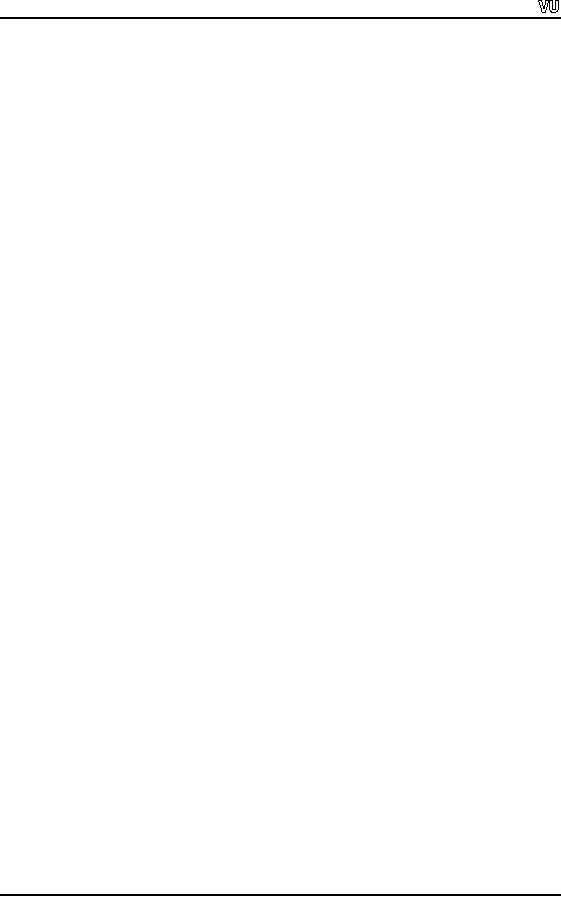
CS201
Introduction to Programming
Assignment
Operator
In C
language equal-to-sign (=)
is
used as assignment operator. Do
not confuse the
algebraic
equal-to with the assignment
operator. In Algebra X = 2 means
the value of X
is 2,
whereas in C language X = 2 (where X is a variable
name) means take the
value 2
and
put it in the memory
location labeled as X, afterwards you
can assign some
other
value to
X, for example you can write
X = 10, that means now
the memory location X
contains
the value 10 and the
previous value 2 is no more
there.
Assignment
operator is a binary operator (a binary
operator has two operands).
It must
have
variable on left hand side
and expression (that
evaluates to a single value) on
right
hand
side. This operator takes
the value on right hand
side and stores it to the
location
labeled
as the variable on left hand
side, e.g. X = 5, X = 10 + 5, and X = X
+1.
In C
language the statement X = X + 1
means that add 1 to the
value of X and then
store
the
result in X variable. If the value of X
is 10 then after the execution of
this statement
the
value of X becomes 11. This
is a common practice for incrementing
the value of the
variable by
`one in C language. Similarly
you can use the
statement X = X - 1 for
decrementing
the value of the variable by
one. The statement X = X + 1 in
algebra is not
valid
except when X is infinity. So do
not confuse assignment
operator (=) with
equal
sign (=)
in algebra. Remember that
assignment operator must have a variable
name on
left
hand side unlike algebra in
which you can use
expression on both sides of
equal sign
(=).
For example, in algebra, X +5 = Y + 7 is
correct but incorrect in C language.
The
compiler
will not understand it and
will give error.
Data
Types
A variable must
have a data type associated
with it, for example it can
have data types
like
integer, decimal numbers,
characters etc. The variable of type
Integer stores integer
values
and a character type variable
stores character value. The
primary difference
between
various data types is their size in
memory. Different data types
have different
size in
memory depending on the machine
and compilers. These also affect
the way they
are
displayed. The `cout' knows
how to display a digit and a
character. There are
few
data
types in C language. These
data types are reserved
words of C language. The
reserve
words
can not be used as a variable
name.
Let's
take a look into different
data types that the C
language provides us to deal
with
whole
numbers, real numbers and
character data.
Whole
Numbers
The C
language provides three data
types to handle whole
numbers.
o int
o short
o long
Page
16
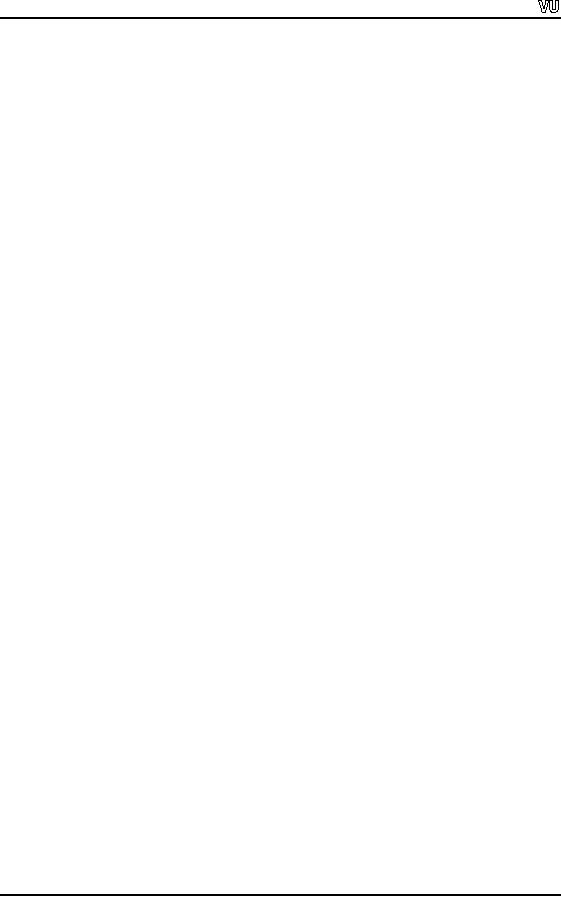
CS201
Introduction to Programming
int
Data Type
The
data type int is used to
store whole numbers
(integers). The integer type
has a space
of 4
bytes (32 bits for
windows operating system) in
memory. And it is mentioned
as
`int' which
is a reserved word of C, so we can
not use it as a variable
name.
In
programming before using any
variable name we have to declare
that variable with
its
data
type. If we are using an
integer variable named as `i', we
have to declare it as
int i
;
The
above line is known as
declaration statement. When we declare a
variable in this
way, it
reserves some space in
memory depending on the size of
data type and labels
it
with
the variable name. The
declaration statement int i ;
reserves
4 bytes of memory and
labels it
as `i'. This
happens at the execution
time.
Sample
Program 1
Let's
consider a simple example to explain
int data type. In this example we
take two
integers,
add them and display the
answer on the screen.
The
code of the program is
written below.
#include
<iostream.h>
main()
{
int
x;
int
y;
int
z;
x =
5;
y =
10;
z = x +
y;
cout
<< "x = ";
cout
<< x;
cout
<< " y=";
cout
<< y;
cout
<< " z = x + y = ";
cout
<< z;
}
The
first three lines declare
three variables x, y and z as
following.
int
x;
int
y;
int
z;
Page
17
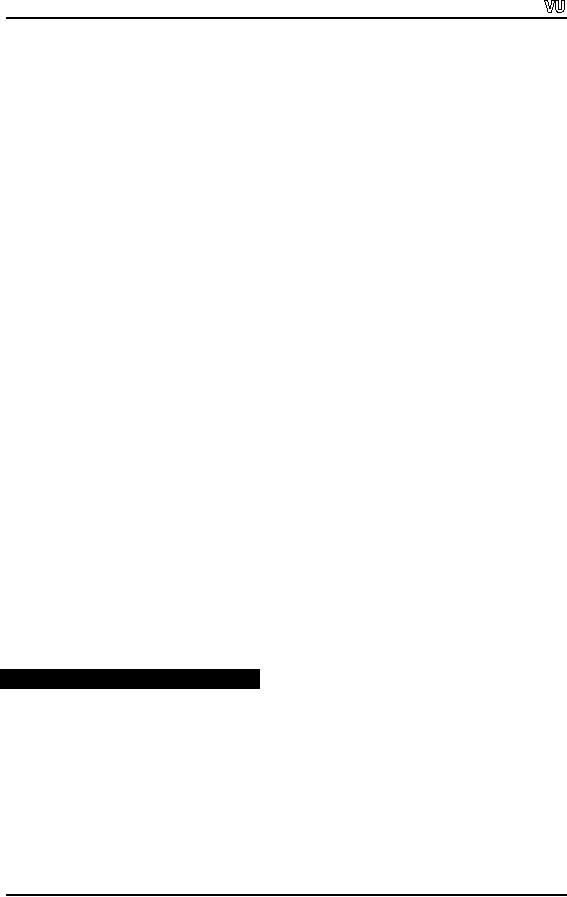
CS201
Introduction to Programming
These
three declarations can also
be written on one line. C
provides us the comma
separator
(,). The above three lines
can be written in a single line as
below
int x, y,
z;
As we
know that semicolon (;)
indicates the end of the
statement. So we can write
many
statements
on a single line. In this way we
can also write the
above declarations in
the
following
form
int x;
int y; int z;
For
good programming practice,
write a single statement on a single
line.
Now we
assign values to variables x
and y by using assignment
operator. The lines x = 5;
and y =
10 assign the values 5 and
10 to the variables x and y,
respectively. These
statements
put the values 5 and 10 to
the memory locations labeled as x
and y.
The
next statement z = x + y; evaluates
the expression on right hand
side. It takes values
stored in
variables x and y (which are
5 and 10 respectively), adds them and by
using the
assignment
operator (=), puts the
value of the result, which
is 15 in this case, to
the
memory
location labeled as z.
Here a
thing to be noted is that
the values of x and y
remains the same after
this
operation.
In arithmetic operations the
values of variables used in
expression on the
right
hand
side are not affected. They
remain the same. But a
statement like x = x + 1; is an
exceptional
case. In this case the value
of x is changed.
The
next line cout << " x = " ; is
simple it just displays ` x = ` on the
screen.
Now we
want to display the value of x
after `x ='. For this we
write the statement
cout
<< x ;
Here
comes the affect of data type on
cout. The
previous statement cout << "x = " ;
has a
character
string after << sign and cout
simply
displays the string. In the statement
cout
<< x;
there is a variable name x. Now
cout will not display
`x' but the value of x.
The
cout
interprets that x is a variable of
integer type, it goes to the
location x in the
memory
and
takes its value and displays
it in integer form, on the
screen. The next line
cout << "y
=";
displays ` y = ` on the screen. And
line cout << y; displays the value
of y on the
screen.
Thus we see that when we
write something in quotation marks it is displayed as
it
is but
when we use a variable name it displays
the value of the variable
not name of the
variable.
The next two lines cout
<< "z = x + y = "; and cout << z;
are written to
display
`z = x + y = '
and the value of z that is
15.
Now
when we execute the program
after compiling, we get the
following output.
x = 5 y = 10 z = x + y
= 15
short
Data type
We noted
that the integer occupies
four bytes in memory. So if we
have to store a small
integer
like 5, 10 or 20 four bytes
would be used. The C
provides another data type
for
storing
small whole numbers which is
called short. The size of short is
two bytes and it
can
store numbers in range of
-32768 to 32767. So if we are going to
use a variable for
which we
know that it will not
increase from 32767, for
example the age of
different
Page
18
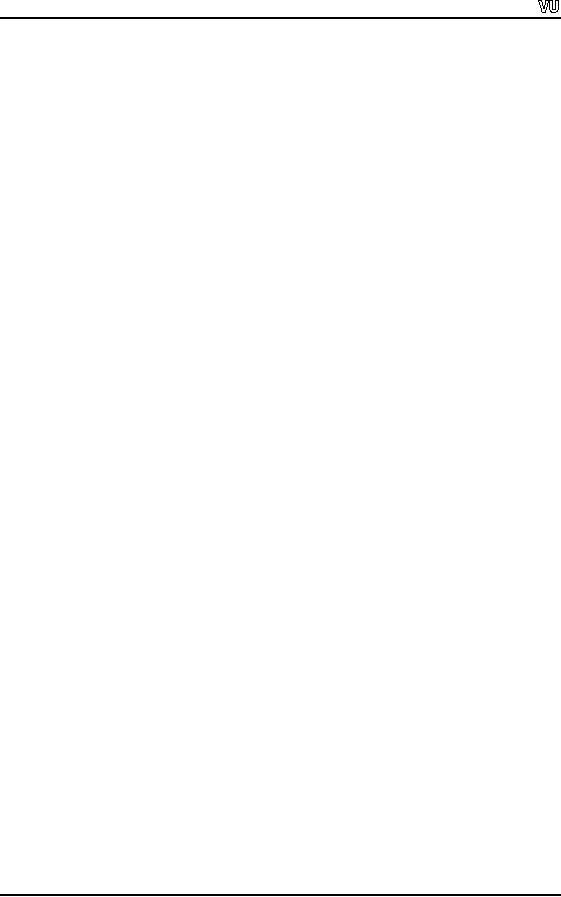
CS201
Introduction to Programming
people,
then we use the data type
short for age. We can
write the above sample
program
by using
short instead of int.
/*This
program uses short data type
to store values */
#include
<iostream.h>
main()
{
short
x;
short
y;
short
z;
x =
5;
y =
10;
z = x +
y;
cout
<< "x = ";
cout
<< x;
cout
<< " y=";
cout
<< y;
cout
<< " z = x + y = ";
cout
<< z;
}
long
Data Type
On the
other side if we have a very
large whole number that
can not be stored in an
int
then we
use the data type long
provided by C. So when we are going to
deal with very
big
whole
numbers in our program, we
use long data type. We use
it in program as:
long x =
300500200;
Real
Numbers
The C
language provides two data
types to deal with real
numbers (numbers with
decimal
points
e.g. 1.35, 735.251). The
real numbers are also
known as floating point
numbers.
o float
o double
float
Data Type
To store
real numbers, float data
type is used. The float
data type uses four bytes to
store
a real
number. Here is program that uses
float data types.
/*This
program uses short data type
to store values */
Page
19
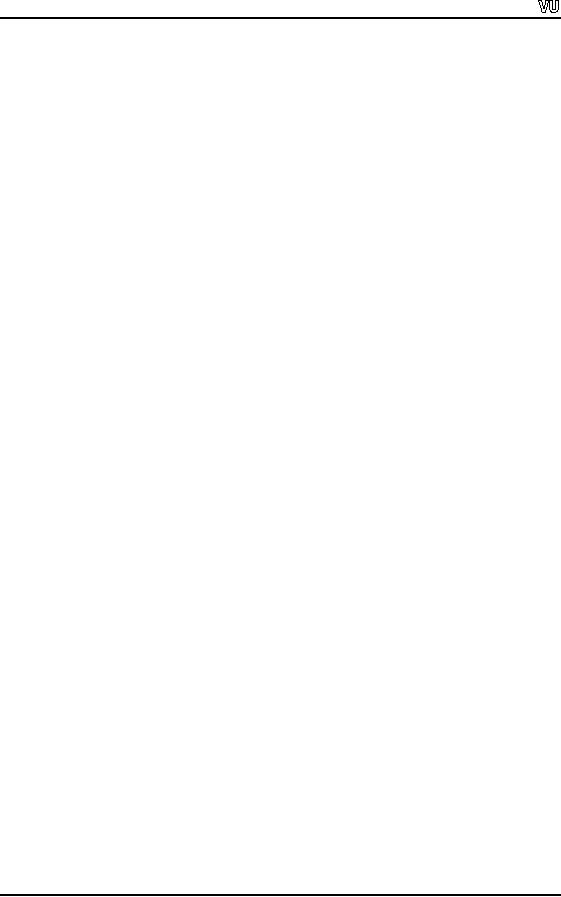
CS201
Introduction to Programming
#include
<iostream.h>
main()
{
float
x;
float
y;
float
z;
x =
12.35;
y =
25.57;
z = x +
y;
cout
<< " x = ";
cout
<< x;
cout
<< " y = ";
cout
<< y;
cout
<< " z = x + y = ";
cout
<< z;
}
double
Data Type
If we
need to store a large real
number which cannot be store
in four bytes, then we
use
double
data
type. Normally the size of
double is twice the size of
float. In program we
use it
as:
double x
= 345624.769123;
char
Data Type
So far we
have been looking on data
types to store numbers, In
programming we do need
to store
characters like a,b,c etc.
For storing the character
data C language provides char
data
type. By using char data type we
can store characters in
variables. While assigning
a
character
value to a char type variable single
quotes are used around
the character as `a'.
/* This
program uses short data type
to store values */
#include
<iostream.h>
main()
{
char
x;
x =
'a';
cout
<< "The character value in x =
";
cout
<< x;
}
Page
20
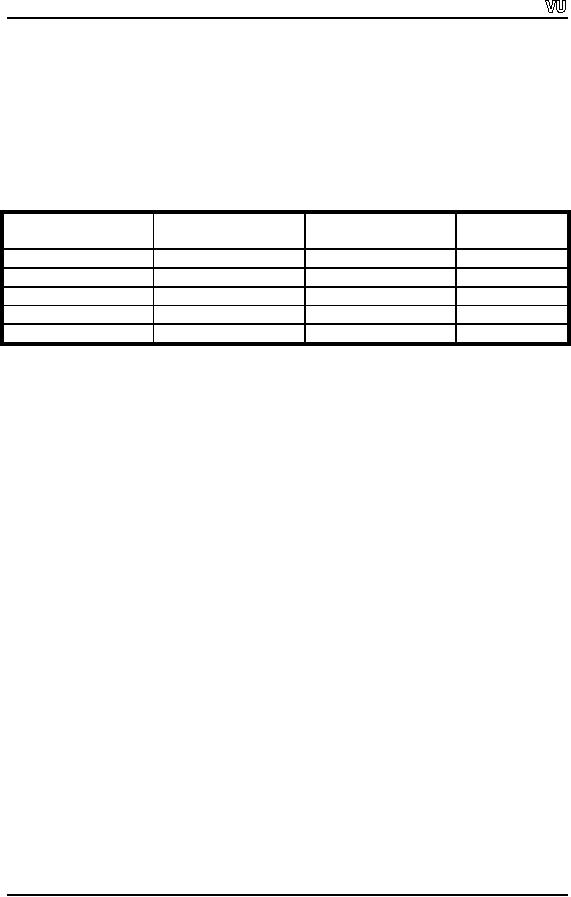
CS201
Introduction to Programming
Arithmetic
Operators
In C
language we have the usual
arithmetic operators for addition,
subtraction,
multiplication
and division. C also
provides a special arithmetic
operator which is called
modulus. All
these operators are binary
operators which means they
operate on two
operands.
So we need two values for
addition, subtraction, multiplication,
division and
modulus.
ARITHMETIC
ARITHMETIC
ALGEBRAIC
C
OPERATION
OPERATOR
EXPRESSION
EXPRESSION
Addition
+
x+y
x+y
Subtraction
-
xy
x-y
Multiplication
*
Xy
x*y
Division
/
x � y, x /
y
x/y
Modulus
%
x mod
y
x%y
Addition,
subtraction and multiplication
are same as we use in
algebra.
There is
one thing to note in
division that when we use
integer division (i.e.
both
operands
are integers) yields an
integer result. This means
that if, for example, you
are
dividing
5 by 2 (5 / 2) it will give integer
result as 2 instead of actual
result 2.5. Thus in
integer
division the result is
truncated to the whole
number, the fractional part
(after
decimal)
is ignored. If we want to get
the correct result, then we
should use float
data
type.
The
modulus operator returns the
remainder after division.
This operator can only be
used
with
integer operands. The
expression x % y
returns
the remainder after x is
divided by
y. For
example, the result of 5 % 2 will be 1,
23 % 5 will be 3 and 107%10 will be
7.
Precedence
of Operators
The
arithmetic operators in an expression
are evaluated according to their
precedence.
The
precedence means which
operator will be evaluated
first and which will be
evaluated
after
that and so on. In an
expression, the parentheses ( )
are used to force the
evaluation
order.
The operators in the
parentheses ( ) are evaluated
first. If there are
nested
parentheses
then the inner most is evaluated
first.
The
expressions are always
evaluated from left to
right. The operators *, /
and % have the
highest
precedence after parentheses.
These operators are
evaluated before + and
operators.
Thus + and operators
has the lowest precedence.
It means that if there are
*
and +
operators in an expression then
first the * will be
evaluated and then its
result will
be added
to other operand. If there
are * and / operators in an
expression (both have
the
Page
21
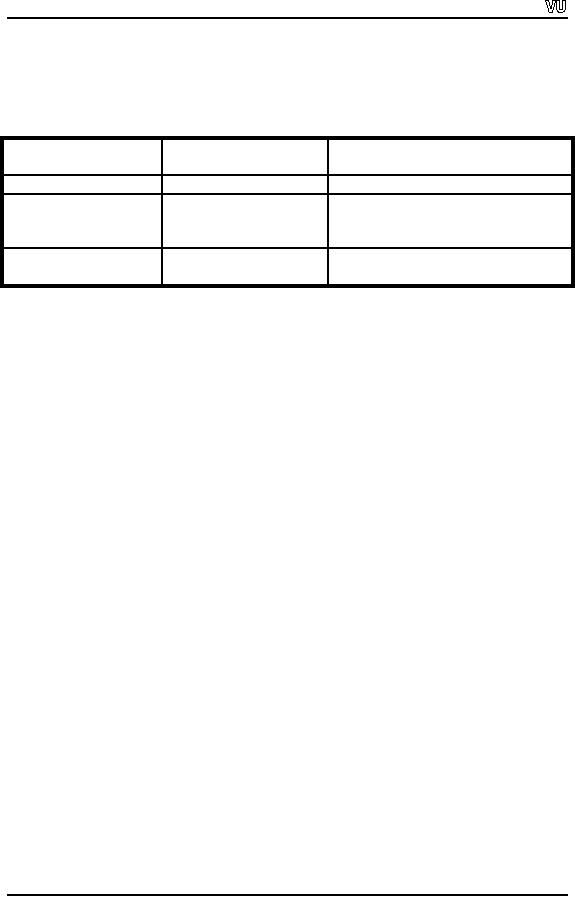
CS201
Introduction to Programming
same
precedence) then the
operator which occurs first
from left will be evaluated
first and
then
the next, except you force
any operator to evaluate by
putting parentheses around
it.
The
following table explains the
precedence of the arithmetic
operators:
OPERATORS
OPERATIONS
PRECEDENCE
(ORDER OF
EVALUATION)
()
Parentheses
Evaluated
first
*, /, or
%
Multiplication,
Evaluated
second. If there are
Division,
Modulus
several,
they are evaluated from
left
to
right
+ or
-
Addition,
Subtraction
Evaluated
last. If there are
several,
they
are evaluated from left to
right
Lets
look some examples.
What is
the result of 10 + 10 * 5 ?
The
answer is 60 not 100. As *
has higher precedence than +
so 10 * 5 is evaluated first
and
then the answer 50 is added
to 10 and we get the result
60. The answer will be
100 if
we force
the addition operation to be done
first by putting 10 + 10 in parentheses.
Thus
the
same expression rewritten as
(10 + 10) * 5 will give
the result 100. Note
that how the
parentheses
affect the evaluation of an
expression.
Similarly
the expression 5 * 3 + 6 / 3 gives the
answer 17, and not 7.
The evaluation of
this
expression can be clarified by
writing it with the use of
parentheses as (5 * 3) + (6 /
3) which
gives 15 + 2 = 17. Thus you
should be careful while writing
arithmetic
expressions.
TIP
Use
spaces in the coding to make it
easy to read and
understand
o
Reserved
words can not be used as
variable names
o
There is
always a main( ) in a C program that is
the starting point of execution
o
Write
one statement per
line
o
Type
parentheses '( )' and braces `{ }' in
pairs
o
Use
parentheses for clarification in
arithmetic expressions
o
Don't
forget semicolon at the end of each
statement
o
C
Language is case sensitive so variable
names x and X are two
different
o
variables
Page
22
Table of Contents:
- What is programming
- System Software, Application Software, C language
- C language: Variables, Data Types, Arithmetic Operators, Precedence of Operators
- C++: Examples of Expressions, Use of Operators
- Flow Charting, if/else structure, Logical Operators
- Repetition Structure (Loop), Overflow Condition, Infinite Loop, Properties of While loop, Flow Chart
- Do-While Statement, for Statement, Increment/decrement Operators
- Switch Statement, Break Statement, Continue Statement, Rules for structured Programming/Flow Charting
- Functions in C: Structure of a Function, Declaration and Definition of a Function
- Header Files, Scope of Identifiers, Functions, Call by Value, Call by Reference
- Arrays: Initialization of Arrays, Copying Arrays, Linear Search
- Character Arrays: Arrays Comparisonm, Sorting Arrays Searching arrays, Functions arrays, Multidimensional Arrays
- Array Manipulation, Real World Problem and Design Recipe
- Pointers: Declaration of Pointers, Bubble Sort Example, Pointers and Call By Reference
- Introduction, Relationship between Pointers and Arrays, Pointer Expressions and Arithmetic, Pointers Comparison, Pointer, String and Arrays
- Multi-dimensional Arrays, Pointers to Pointers, Command-line Arguments
- String Handling, String Manipulation Functions, Character Handling Functions, String Conversion Functions
- Files: Text File Handling, Output File Handling
- Sequential Access Files, Random Access Files, Setting the Position in a File, seekg() and tellg() Functions
- Structures, Declaration of a Structure, Initializing Structures, Functions and structures, Arrays of structures, sizeof operator
- Bit Manipulation Operators, AND Operator, OR Operator, Exclusive OR Operator, NOT Operator Bit Flags Masking Unsigned Integers
- Bitwise Manipulation and Assignment Operator, Programming Constructs
- Pre-processor, include directive, define directive, Other Preprocessor Directives, Macros
- Dynamic Memory Allocation, calloc, malloc, realloc Function, Dangling Pointers
- History of C/C++, Structured Programming, Default Function Arguments
- Classes and Objects, Structure of a class, Constructor
- Classes And Objects, Types of Constructors, Utility Functions, Destructors
- Memory Allocation in C++, Operator and Classes, Structures, Function in C++,
- Declaration of Friend Functions, Friend Classes
- Difference Between References and Pointers, Dangling References
- Operator Overloading, Non-member Operator Functions
- Overloading Minus Operator, Operators with Date Class, Unary Operators
- Assignment Operator, Self Assignmentm, Pointer, Conversions
- Dynamic Arrays of Objects, Overloading new and delete Operators
- Source and Destination of streams, Formatted Input and Output, Buffered Input/Output
- Stream Manipulations, Manipulators, Non Parameterized Manipulators, Formatting Manipulation
- Overloading Insertion and Extraction Operators
- User Defined Manipulator, Static keyword, Static Objects
- Pointers, References, Call by Value, Call by Reference, Dynamic Memory Allocation
- Advantages of Objects as Class Members, Structures as Class Members
- Overloading Template Functions, Template Functions and Objects
- Class Templates and Nontype Parameters, Templates and Static Members
- Matrices, Design Recipe, Problem Analysis, Design Issues and Class Interface
- Matrix Constructor, Matrix Class, Utility Functions of Matrix, Input, Transpose Function
- Operator Functions: Assignment, Addition, Plus-equal, Overloaded Plus, Minus, Multiplication, Insertion and Extraction